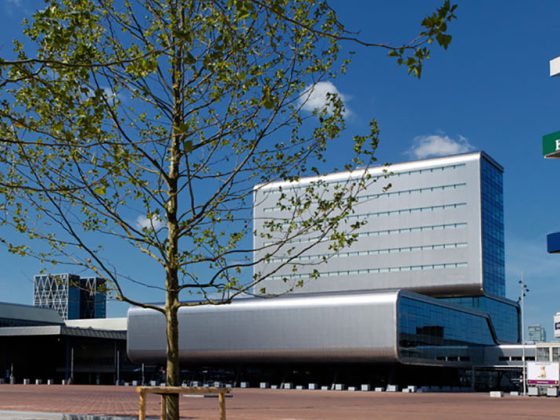Complementary medicine is desired and used by very many breast cancer patients. For the treating physician, competent handling is an opportunity to improve oncological therapy and increase compliance.
Complementary adjunctive therapies are used by approximately 40% of all oncologic patients and up to 80% of those with breast carcinoma [1]. Behind this is often the need to become active oneself and to have a positive effect on the recovery or to support the body as much as possible. “What can I do myself?” is a very common question. In the meantime, the science around complementary measures has developed massively and we can already prove some methods and measures as harmless in terms of effect and effective in terms of alleviating various side effects of conventional therapy. For the treating physicians, a competent handling of scientifically based complementary methods means a chance to improve the oncological therapy and to increase the patient’s compliance.
Integrative therapy
The integrative concept for support is based on a salutogenetic principle, lifestyle change and activation of own resources. In addition to psychological aspects and complementary medical self-help measures (such as compresses or acupressure), essential pillars are exercise, nutrition and relaxation.
The principles of a healthy diet with lots of vegetables, fruit, fresh produce and fiber, and little animal protein are familiar to many people. But it is precisely our “civilization diet” that is characterized by too much simple carbohydrates, sugar and fats and promotes not only obesity, but also subliminally chronic inflammation, which in turn is involved in the development of carcinoma. In this respect, it is important to draw attention to this issue and, if necessary, to motivate patients to change their diet. Studies have shown that weight reduction alone reduces the risk of recurrence in breast cancer by up to 24% (WINS, Women Intervention Study). In a 2014 meta-analysis [2], Chan and colleagues showed that as body weight increases, so does breast cancer-specific mortality.
But not only the diet, but also a regular exercise shows consistently positive influences and not only on weight management. For example, in 2015 Irwin et al. [3] show that with 150 minutes of moderate exercise per week, arthralgias were up to 30% lower after one year of aromatase inhibitor therapy. Prevention through sport is now well documented and belongs in complementary counseling. It is not about turning a “couch potato” into a top athlete, but about raising awareness of the positive effects on the one hand and integrating individual preferences and possibilities into an adapted program on the other, in order to bring more exercise into life in a sustainable way.
Within the framework of mind-body medicine, we now have a great deal of knowledge about positive effects on, on the one hand, psychological symptoms such as depression and anxiety, but also physical complaints of anti-hormone therapy, sleep quality and fatigue. For example, the German Working Group on Gynecological Oncology (AGO) recommends “mindfulness-based stress reduction” (MBSR) to reduce depressive symptoms and improve quality of life. In this 8-week program, patients learn to incorporate and implement mindfulness-based aspects into their daily lives. Zainal et al. [4] were able to show in a meta-analysis of nine studies that MBSR practice had a moderate to large effect on the mental health of women with breast cancer. Meanwhile, recent studies confirm an additional positive effect also on “cancer-related” fatigue. Likewise, yoga shows a good effect on the side effects of therapy. In the 2012 meta-analysis, Harder and colleagues [5] found positive benefits of yoga practice in all 18 included studies, with the greatest effect showing improvement in quality of life. The use of acupuncture for chemotherapy-induced nausea and vomiting, for example, now has a high level of recommendation, and its use for fatigue and side effects of anti-hormone therapy is also worth trying. A very nice overview with practical recommendations based on evidence can be found in the work of Witt and Cardoso [6].
Food supplements
Dietary supplements are one of the most commonly used complementary methods by carcinoma patients.
Vitamin D has received special attention in recent years – it is now part of everyday oncology practice. We now know that deficient vitamin D levels can have an unfavorable effect on the course of the disease. Two meta-analyses published in 2014 showed that low serum concentrations of vitamin D were associated with significantly increased mortality [7,8]. Vitamin D should therefore be monitored in all patients and supplemented if necessary (target: 40-60 ng/ml or 100-150 mmol/l).
But the scientific basis for other vitamins and trace elements has also improved significantly. Thus, the additional administration of selenium (sodium selenite) can reduce the side effects of chemotherapy and radiotherapy. Selenium is an essential trace element and, as a component of selenoproteins, exerts numerous pleiotropic effects. In this context, selenium has anti-inflammatory, antioxidant and cytoprotective effects. In a randomized trial, Kasseroller 2000 [9] found in patients with a history of lymphedema and frequent erysipelas that the addition of sodium selenite to physical therapy reduced the incidence of erysipelas.
In a German study of 1561 women, Beuth et al. 2016 [10] show that arthralgias under anti-hormone therapy had improved by a statistically significant 63% after only four weeks of administration of a selenium-lentil extract-enzyme mixture.
The data situation for other vitamins such as vitamin A or E is still contradictory, so that no practical recommendation can be concluded here. Vitamin C, especially high-dose vitamin C (up to 60 g per infusion and more) is considered controversial. At this high dose, ascorbic acid acts pharmacologically as an oxidizing peroxide (H2O2) in tissues, and is thereby thought to exert a selective cytotoxic effect on tumor cells. However, good clinical studies are needed to demonstrate efficacy and safety. For 7.5 g/week on top of ongoing chemotherapy, a retrospective study exists that was able to demonstrate a positive effect on fatigue syndrome and quality of life. An interesting substance is curcuma, which is now being increasingly studied and shows positive effects. In combination with pepper and probably at a dosage of at least 1 g/d, it appears to reduce side effects of chemotherapy and radiotherapy. Further studies are expected here.
In principle, micronutrient therapy as a supplement to chemotherapy is not to be discouraged as long as it is not in the high-dose range. It can compensate for deficits that may have arisen during therapy. At the same time, a baseline determination prior to supplementation is helpful to uncover any deficiencies that can then be specifically compensated for.
Mistletoe therapy
A large number of patients are interested in mistletoe therapy and it is estimated that approximately 16% of all early stage breast cancer patients use mistletoe therapy. No therapy is probably as controversial as mistletoe therapy. In this regard, it is probably the best-studied complementary therapy now available and shows no attenuation of chemotherapy either in vivo or in vitro. In addition, we now have good evidence that the additional use of a mistletoe extract to oncologic therapy leads to better quality of life, less fatigue, and higher tolerability. There is no evidence for an activation of tumor cells, as has been discussed time and again, neither preclinically nor clinically in the more than 100 clinical studies performed today.
Conclusion
An improvement in quality of life through the use of individualized and complex complementary medicine was shown by Witt and colleagues in 2015 [11] in a randomized study of 275 breast cancer patients. Compared to a usual standard follow-up, the women who received complementary medicine were found to have statistically significantly improved scores after six months.
In summary, it can be said that there is a great demand for complementary methods among women with breast cancer due to the need to become active themselves and to support the recovery process in a self-effective way. Increasing scientific data now allow a variety of complementary therapies to be used safely and efficiently as adjuncts to conventional therapy, thereby favorably influencing the course of therapy. The integrative approach is a combination of conventional and complementary medicine and adds a salutogenetic principle to the therapeutic spectrum. This strengthens and promotes the individual’s own activity and resources in the recovery process.
Take-Home Messages
- Complementary medicine for breast cancer is desired and used by a great many women.
- Essential pillars of an integrative therapy are nutrition, exercise and relaxation (mind-body medicine).
- The concept is complemented by supplementation with micronutrients, with certain vitamins and trace elements being of particular importance here.
- Complementary mistletoe therapy reduces side effects and fatigue and improves quality of life.
- Competent use of scientifically based complementary methods is an opportunity to improve oncological therapy and increase patient compliance.
Literature:
- Horneber M, et al: How many cancer patients use complementary and alternative medicine: a systematic review and metaanalysis. Integr Cancer Ther 2012; 11(3): 187-203.
- Chan DS, et al: Body mass index and survival in women with breast cancer-systematic literature review and meta-analysis of 82 follow-up studies. Ann Oncol 2014; 25(10): 1901-1914.
- Irwin ML, et al: Randomized exercise trial of aromatase inhibitor-induced arthralgia in breast cancer survivors. J Clin Oncol 2015; 33(10): 1104-1111.
- Zainal NZ, et al: The efficacy of mindfulness-based stress reduction on mental health of breast cancer patients: a meta-analysis. Psychooncology 2013; 22(7): 1457-1465.
- Harder H, et al: Randomised controlled trials of yoga interventions for women with breast cancer: a systematic literature review. Support Care Cancer 2012; 20(12): 3055-3064.
- Witt CM, Cardoso MJ: Complementary and integrative medicine for breast cancer patients – Evidence based practical recommendations. Breast 2016; 28: 37-44.
- Mohr SB, et al: Meta-analysis of vitamin D sufficiency for improving survival of patients with breast cancer. Anticancer Res 2014; 34(3): 1163-1166.
- Schöttker B, et al: Vitamin D and mortality: Meta-analysis of individual participant data from a large consortium of cohort studies from Europe and the United States: BMJ 2014; 348: g3656.
- Kasseroller RG, Schrauzer GN: Treatment of secondary lymphedema of the arm with physical decongestive therapy and sodium selenite: a review. Am J Ther 2000; 7(4): 273-279.
- Beuth J, et al: Large-scale Survey of the Impact of Complementary Medicine on Side-effects of Adjuvant Hormone Therapy in Patients with Breast Cancer. In Vivo 2016; 30(1): 73-75.
- Witt CM, et al: Effectiveness of an additional individualized multi-component complementary medicine treatment on health-related quality of life in breast cancer patients: a pragmatic randomized trial. Breast Cancer Res Treat 2015; 149(2): 449-460.
Further reading:
- Beuth J, et al: Complementary medicine on side-effects of adjuvant hormone therapy in patients with breast cancer. In Vivo 2013; 27(6): 869-871.
- Greenlee H, et al: Clinical practice guidelines on the use of integrative therapies as supportive care in patients treated for breast cancer. J Natl Cancer Inst Monogr 2014; 2014(50): 346-358.
- Johns SA, et al: Randomized controlled pilot trial of mindfulness-based stress reduction compared to psychoeducational support for persistently fatigued breast and colorectal cancer survivors. Support Care Cancer 2016; 24(10): 4085-4096.
- Vollbracht C: Intravenous vitamin C administration improves quality of life in breast cancer patients during chemo-/radiotherapy and aftercare: results of a retrospective, multicentre, epidemiological cohort study in Germany. In Vivo 2011; 25(6): 983-990.
InFo ONCOLOGY & HEMATOLOGY 2017; 5(4): 14-16.











